DOI:10.32604/csse.2022.022173

| Computer Systems Science & Engineering DOI:10.32604/csse.2022.022173 |  |
| Article |
Efficient Energy-Aware Resource Management Model (EEARMM) Based Dynamic VM Migration
1Department of Information Technology, Sri Krishna College of Technology, Coimbatore, 641042, India
2Department of Electrical & Electronics Engineering, Kumaraguru College of Technology, Coimbatore, 641049, India
3Department of Computer Science & Engineering, SNS College of Technology, Coimbatore, 641035, Tamilnadu, India
*Corresponding Author: V. Roopa. Email: roopa.venkat3384@gmail.com
Received: 29 July 2021; Accepted: 22 October 2021
Abstract: In cloud environment, an efficient resource management establishes the allocation of computational resources of cloud service providers to the requests of users for meeting the user’s demands. The proficient resource management and work allocation determines the accomplishment of the cloud infrastructure. However, it is very difficult to persuade the objectives of the Cloud Service Providers (CSPs) and end users in an impulsive cloud domain with random changes of workloads, huge resource availability and complicated service policies to handle them, With that note, this paper attempts to present an Efficient Energy-Aware Resource Management Model (EEARMM) that works in a decentralized manner. Moreover, the model involves in reducing the number of migrations by definite workload management for efficient resource utilization. That is, it makes an effort to reduce the amount of physical devices utilized for load balancing with certain resource and energy consumption management of every machine. The Estimation Model Algorithm (EMA) is given for determining the virtual machine migration. Further, VM-Selection Algorithm (SA) is also provided for choosing the appropriate VM to migrate for resource management. By the incorporation of these algorithms, overloading of VM instances can be avoided and energy efficiency can be improved considerably. The performance evaluation and comparative analysis, based on the dynamic workloads in different factors provides evidence to the efficiency, feasibility and scalability of the proposed model in cloud domain with high rate of resources and workload management.
Keywords: Resource management model; energy efficient; cloud computing; VM migration; workload management
In the present scenario, cloud computing has become the most yielding computing domain with the motive of affording the infinite virtual computational and communicational resources, data storage as pay-by-use manner [1]. Because of the continual growth of customer needs for resources, the size and the energy utilization of the cloud data centers are rising, thereby resulting in increased processing cost [2]. Furthermore, the expected range of Quality of Service (QoS) can be effectively described through Service Level Agreement (SLA) requirements that are to be fulfilled to achieve high-level customer satisfaction. Accordingly, minimizing energy utilization of data centers while assuring required expectations to be defined as significant challenge [3]. The Fig. 1 portrays the cloud system model that comprises data centers and virtual machines.
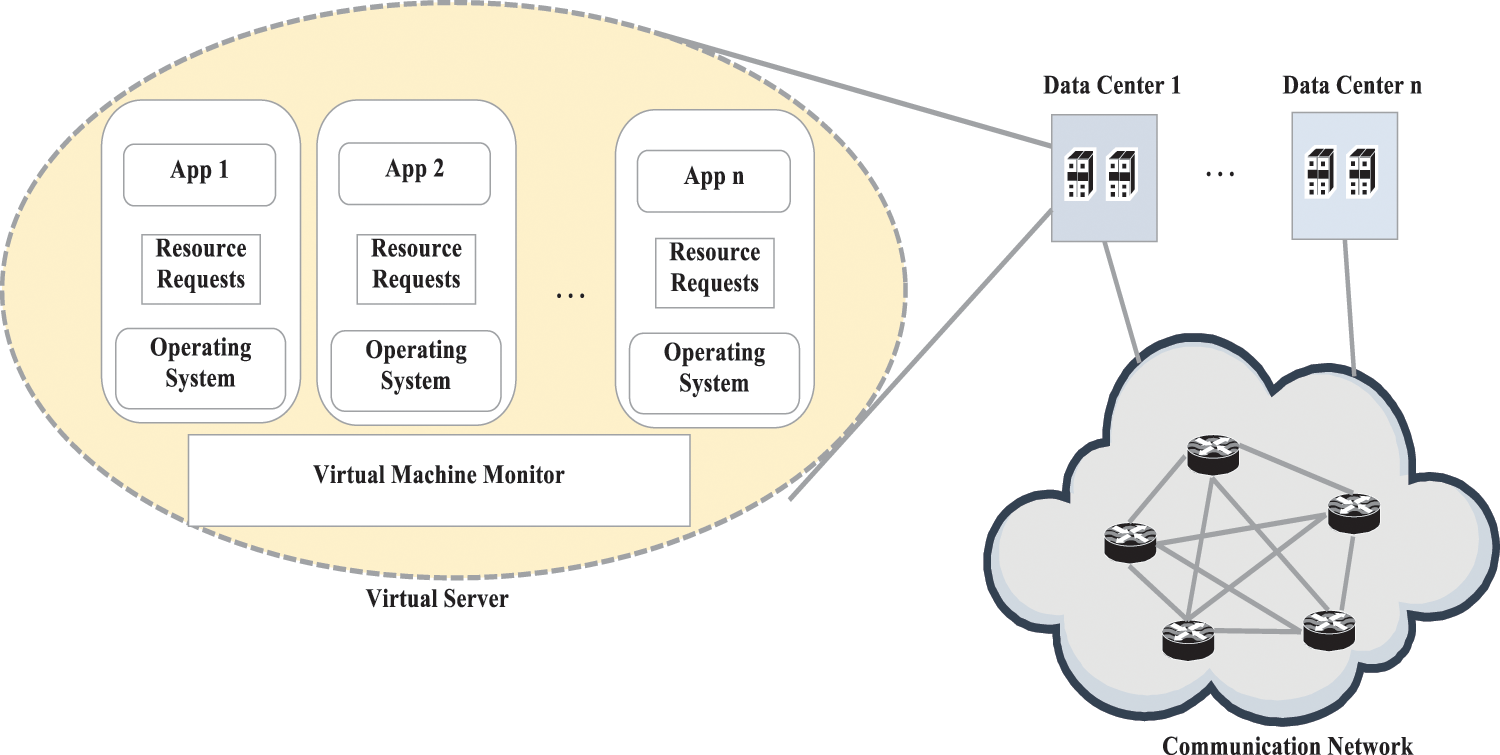
Figure 1: Cloud system model
In large-scale data centers, workloads are considered to be the number of defined virtual machine instances. Concerning efficient energy utilization, VM migration plays a significant part by making the active virtual machines in to lesser number of physical machines as possible [4]. Live VM migration defines the processing of switching off the active VM instance between distinctive process nodes without removing the connection with the end user [5]. It is also to be stated that VM migration is cost effective in implementation [6,7], thereby increasing the efficient energy consumption between the process nodes, when it is taken for servicing large number of VM instances.
Moreover, in present computations, the existing methodologies are based on topologies like hierarchical [8], ring [9] or centralized [10] topologies. However, such models exhibit some constraints in processing workload management and resource allocation.
With that consideration, the main focus of this paper mainly focusses on developing a completely decentralized, energy efficient workload balancing model for cloud infrastructures. The major objective of the proposed model is to overcome the limitations in the aforementioned topologies. The decentralized approach is more energy efficient considering the workload management than the centralized model [1] and also avoids the overload at the computing nodes. Hence, dynamic VM migration incorporates, in particular, the physical devices of the data centers that are mapped to the virtual machines which/that are independently organized in a reliable overlay cloud network. Further, in the transformed VM instances, so called workloads are managed by the physical devices autonomously. And, it is significant to state that the physical devices are not insistently migrated. Consequently, this may cause violations over Service Level Agreements.
Based on the VM selection and relocation techniques, the workload allocations and resource management have been accomplished. Initially, the links to be maintained by the devices are considerably reduced, which is directly proportional to the number of communicative information shared between them. Hence, the resource utilization has also been reduced by effective management strategies in large scale cloud environments. By effective implementation of complete and biased VM migration algorithms, the bottleneck problem and link failures have been alineated. And, the prominent features of the proposed model are given as follows:
• Decentraliztion: the proposed resource management model is completely distributed and worked on independent manner using distributed algorithms that are processed by individual physical devices efficiently.
• Flexibility: about the size of the cloud data center, the number of active devices are listed on the basis of dynamic workloads. The live VM migration is accomplished for improving the model efficiency with respect to utilization of energy resources.
• Feasibility: Cost effectiveness is a vital factor in cloud paradigm, which can be effectively managed by the designed topology consideration that demonstrated O (log2N) complexity, where ‘N’ is considered to be the number of physical devices. Furthermore, the proposed EEARMM performs dynamic VM migration and minimizes the number of physical devices to be active. Simultaneously, it also reduces the number of max-consumed physical devices.
The rest of the paper is organized as follows: Section 2 depicts a reflection on the study of related works. Section 3 lays out the detailed work process of the Efficient Energy-Aware Resource Management Model (EEARMM) with dynamic VM migration algorithms in enterprise clouds. The experimental results and comparative evaluations are given in Section 4. Finally, Section 5 concludes the paper with some suggestions for future work.
In [11], ecoCloud model has been proposed for power-aware VM consolidation. In that, the VM consolidation and alignment of VM instances are processed by the probabilistic determination of both the concern of RAM and CPU usage. The model also enables decision making on workload balancing based on the received local data. Even the model was dependent on central data center admin for the synchronization of servers. Further, green computing in cloud has been described in [12,13], based on VM migration which has become the trending topic in present scenario. Nevertheless, green computing has gained the interest, minimizing the computational cost and resource utilization is still one of the challenging issues. In the recent work [14], the authors have described a novel mechanism for dynamic VM migration using minimum physical machines. The motive of that work was to minimize the energy utilization rate of private cloud without exposing the reliability of the process nodes. Sliding window based detection model and central cloud admin have been derived for processing the resource mappings between the virtual and the physical machines with respect to the data gathered periodically.
In another way, an Energy Efficient Resource Management system [15] for virtual cloud data center has been developed. The system is stated as partially centralized, having the hierarchical framework and the virtual machine migration has been accomplished by deriving the solution for bin-packing issue. Energy efficient resource mapping with a set of defined algorithms has been proposed based on dividing the virtual machine resources [16]. The framework consisted a set of centralized elements with an energy monitor to monitor the energy consumption rates of virtual and physical machines and a virtual machine manager to control the resource allocation process.
A Model-driven approach called SCORCH [17] has been proposed for energy optimization with reduced computational cost. For achieving energy efficiency, pre-configured virtual machines that were processed rapidly. Further, the terms of resource allocation has been implemented in green computing framework, in accordance with the stochastic rewards in [18]. Besides, the authors of [19] provided dual energy oriented task consolidation heuristics that intended to enhance the resource consumption and clearly considered both the active and in-active instances of energy utilization. But, there was not any clear description about the decentralized framework.
In another work [20], demand forcast model has been processed by combining dynamic virtual machine migration techniques. It involved in allocation of VM instances to the exact physical machines based on the client requests on time. Energy-aware resource allocation policies have been determined in [21], in which the energy consumption has been optimized by inactivating the excess VM host servers. It is completely dependent on the user requirements and system behaviour.
In a distinctive manner, Eucalyptus Cloud Environment with the enforcement of live VM consolidation has been given in [22,23]. In this model, the VM relocation has been handled by the cluster and the node controllers, using the hierarchical data center framework. Gossiping protocol has been utilized for VM consolidation in [24,25]. The protocol was termed as V-MAN and relied on the top of the unstructured framework. Additionally, the VM relocation has been performed with the full coverage of all instances. Therefore, the model involved in minimising the active machines and enhanced the energy consumption rate with respect to the data center. The main disadvantage about the model is, that it does not have any focus on the operation or the computational cost, which is the most vital factor in cloud. Further, there is also a possibility of SLA violations, since, the model attempted to process within the minimum number of virtual machines.
Self-organizing Workload redistribution algorithm between the VM servers is given in [26]. In this model, a scout was produced for each server machine that travels from one machine to another via the predefined communication link and gathered data about them. Heterogeneity-aware resource provisioning model has been provided in [27], in which harmony based resource management model has been designed for clustering and categorizing the different tasks of virtual machines. No reference was given about the decentralized processing. In such case, the model should be collaborated with a decentralized model for energy optimization and appropriate VM migration.
An efficient VM planner model has been proposed by the authors [28] for network-aware virtualization in enterprise clouds. For considerable power saving, the VM planner model optimizes the VM relocation and routing, by switching-off the unwanted network components. VMFlow [29] is another model, which is related to VM planner, considers the traffic flow and network topology for utilizing the minimum power to serve many end users in all possible ways.
3.1 Dynamic VM Migration Model
In the proposed model, the VM migration has been forecasted by enforcing the reduction of physical machines utilized along with the efficient resource allocation for each physical machine (PM). The important definitions to be considered for the model are explained as follows:
Definition 1: (Most_Active PM), when the overall definite memory utilization rate (MURj) of the VMs on PMj that fits in to the Eq. (1),
(MURj−mem_SLA)/mem_SLA>f (1)
Further, it is noted as the hot nodes, which is the ‘Most_Active PM’ in the overall process. From the equation, ‘ mem_SLA ’ denotes the memory declaration that meets the service level agreement, by which the total memory allocated for the PM and ‘f’ denotes the factor of memory allocated to the VM, which is over utilized than the predefined percentage.
Definition 2: (Violation of mem_SLA ), overall definite memory utilization rate (MURj) of the VM with its PM, that meets the following derivation statement (2),
MURj>mem_SLA(1+fmax) (2)
In this instant, the memory utilization rate of the physical machine violates the SLA policies, where ‘ fmax⇐max(MURj)−memSLAmemSLA,MURj⇐MA ’, MA is the memory amount of the physical machine can be provided.
3.2 VM Selection Process for Migration
When it is detected that the resources of the physical machines in cloud are over utilized or consumed, then there is a need of selection of virtual machines for dynamic migration. For that, the proposed EEARMM derives a selection algorithm for choosing the exact virtual machine among several machines for migration. Because of various resource constraints, the VM migration will produce a great impact on the overall processing in cloud data center.
Moreover, the strategy for appropriate VM selection to migrate is described below. The dynamic VM selection process is completely based on the dynamic resource utilization. Under the idea of using evaluation methodology for selecting the next VM for scheduling the workloads, the proposed algorithm in this model requires and analyzes the data_history collected on the Module that monitors the resource allocation and service process. In accordance with that, the Most_Active PM has been detected for further periodical memory utilization, in the list of VM host (VM_list). The VM scheduling approach combined with load balancing yields to the selection of VM instances and it is further to be migrated. Further, the virtual machine with minimum energy consumption or resource utilization is considered to be the proposed VM to be migrated in the sequential process.
Destination Host Selection for VM Migration
After selecting the VM to be migrated, it is vital to select the location for migration in the cloud environment, in such a way that, relocating a VM to a physical machine, in which the next periodic load would be more. Hence, the migration may resolve the overloading issue among the present PMs. But, the subsequent periodic cycle may define new Most_Active PM in cloud. For such scenario, selecting appropriate destination host for VM relocation is a significant process. Moreover, the destination host will be selected with respect to the following criteria.
a. Minimum Workload Priority
The VM will follow the priority based relocation to physical machines, in which the energy consumption is considerably low. This may result in the successful execution of VM in the new PM node and also ensures that the specific PM is not overloaded or over consumed. But, the process does not focus about the run time changes of VM resource utilization.
b. Workload Balancing
The main objective is to provide the VM process to be executed in several PMs, in such a way that the complete cloud platform could be handled in a considerably balanced format. This may enhance the overall system performance.
c. Based on the Selection Algorithm
The monitor module gathers the data_history about the periodical utilization of memory of various PMs. And, that comprises several distributed virtual machines in cloud environment, using the defined algorithm in (Tab. 1). Moreover, the algorithm considers the dynamic variations of resource utilization of particular VM. Perhaps, this may minimize the number of requirements of VM relocation in enterprise clouds. So, it is very important to select the VM to migrate and the location for migration in an effective way with the consideration of Energy consumption.

3.3 Efficient Energy-Aware Resource Management Model (EEARM)
As mentioned earlier, the proposed model considers the dynamic variation in memory utilization of VM and destination host selection is a vital process, to be included in the VM deployment operation in cloud. For this parameter evaluation, Least-Square estimation model has been incorporated.
Based on the dynamic variations, the uncertainty of memory utilization of various VMs with respect to time is portrayed, in order to assure that resource utilization of each VM on corresponding physical machines reaches the service level agreement, when it satisfies the condition, (MURj−mem_SLA)/mem_SLA>f .
The proposed model presents an algorithm for energy efficient VM selection for migration. The algorithm involves in selecting the smallest VM relocating on the Most_Active PM nodes. Moreover, the design includes resource request list, service estimation and scheduler, Monitor module and device controller and the overall architecture of the EEARMM is provided in Fig. 2. The basic procedure for implementing EEARMM is explained as follows:
1. Initialization of Required Parameters
2. Server monitoring process has been accomplished by using the resource monitor module. This involves in collecting the data about the resource utilization of all the VM belonging to various PMs in a periodic manner.
3. Checking whether the resource utilization process satisfies the condition given in Eq. (1), to rate about the SLA violations.
4. Appropriate virtual machine selection for dynamic migration by analysing the machines with minimum resource consumption.
5. Migration process has been done to the proper location to exact PM. When, any suitable PM cannot be found, a new physical machine will be started.
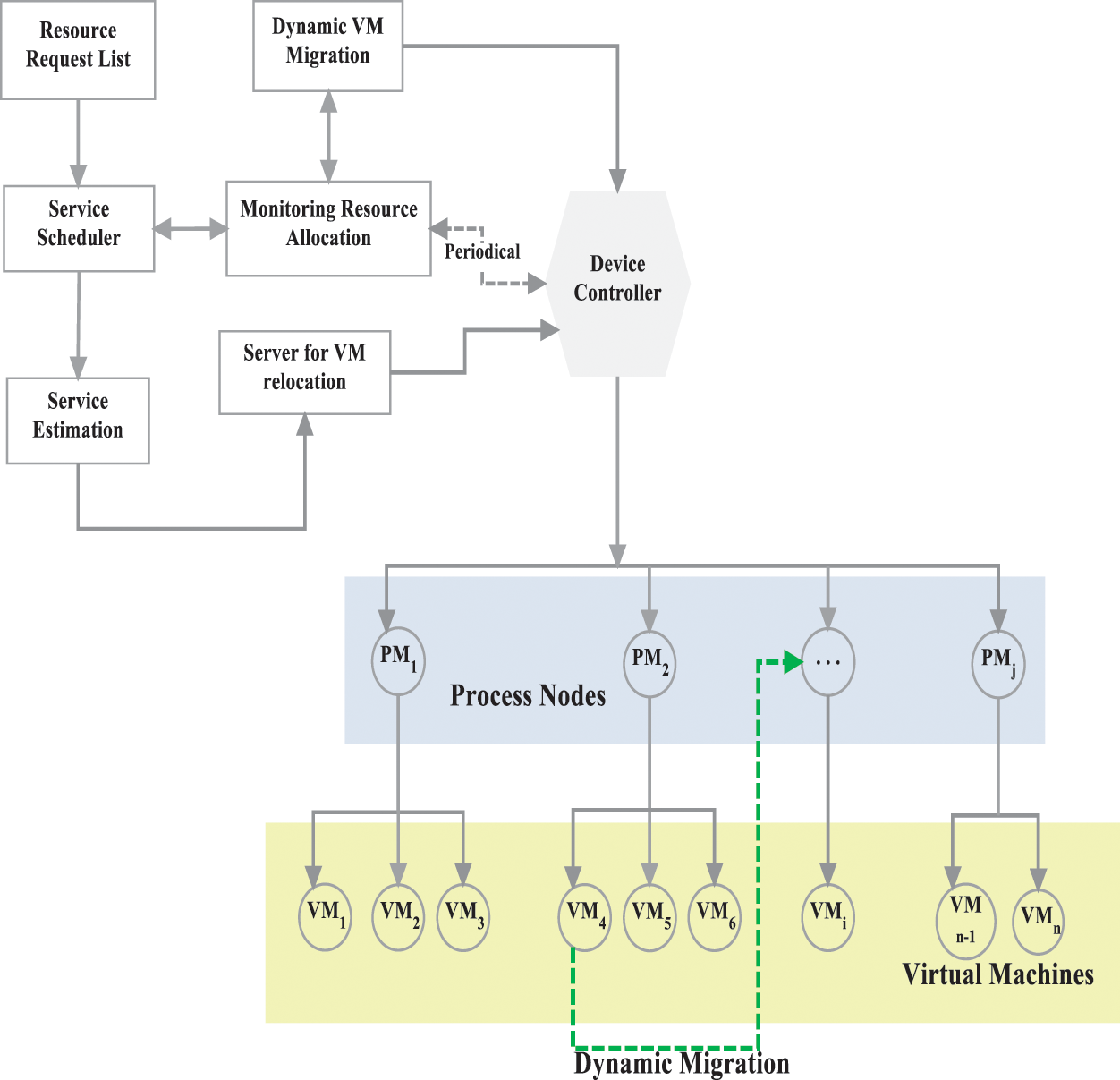
Figure 2: Architecture of EEARM in cloud platform
Further, the Fig. 3 illustrates the flow chart for the work process of the proposed model.

Figure 3: Workflow of the proposed model
In the aforementioned algorithm, the selection of VM is explained. The input parameters including PM_List, VM_List, PMi, f, rate, a for each periodic cycle with the evaluation made for determining if the present process node PMi is in the position of Most_Active PM or not. Further, the parameters such as PM_List, VM_List, PMi, f, rate, a are setting with respect to the particular experimental setup for collecting the history of information about the resource utilization of VMk and the VM having the minimum rate of resource consumption is considered to be the next VM to migrate. The algorithm given in Tab. 2 provides the procedure of VM placement.

From the algorithm, it is clearly defined that VM placement algorithm avoids making average utilized PM nodes to become the Most_Active PM nodes. With that, the workloads among the virtual machines are effectively balanced and the optimized energy utilization has been accomplished.
Displacement vs. Resistance vs. Load
The experimental analysis of the proposed model is carried out with the simulation tool called CloudSim. Further, the obtained results are compared with the existing models such as V-MAN and SCORCH for providing evidence for the efficiency of the EEARMM. When the virtual machines are set out, the memory of the physical server is assumed from the additional resource allocation conceit, with the consideration of dynamic variations of VM resource utilization. It is to be stated that the memory consumed by each PM is taken as ‘MURj’ at the evaluation process. Moreover, in this experimentation, memory factor of each VM varied dynamically and it is obtained from random functions.
For making every VM that is active in the model to meet their memory needs in accordance with the service level agreement, resource allocation of each PM is constrained with a predefined threshold value called ‘rate’. When the range of resource consumption of physical machine reaches beyond the mem_SLA, which is greater than the value of ‘f’, there started the live virtual machine migration. Moreover, the evaluation has been accomplished with the varying ranges of ‘f’, with respect to the number of virtual machine migrations happened under different rate of thresholds.
Initially, the threshold rate is considered as 0.8, and the memory over consumed estimation factor ‘f’ is taken as the dynamic varying parameter, that ranges from 0.05 to 0.30 in a particular PM. When it is evaluated for the overall definite memory utilization rate (MURj) of the VMs on PMj that satisfy the following equation (as given in (1)), (MURj−mem_SLA)/mem_SLA>f , the dynamic VM migration is begun at that instant. The experimentation has been carried out for each defined value of ‘f’ in respective manner.
The Fig. 4 presented above illustrates the comparison between the models on the energy consumption rate with respect to the simulation time. It is explicit from the graph that the proposed EEARMM achieves minimum energy consumption than others for about 23% in average. This shows that the proposed model is energy efficient by using the efficient virtual machine selection process and proper destination PM for dynamic migration. Based on the work process given in Section 3, the energy of the deployed process nodes are optimally utilized.
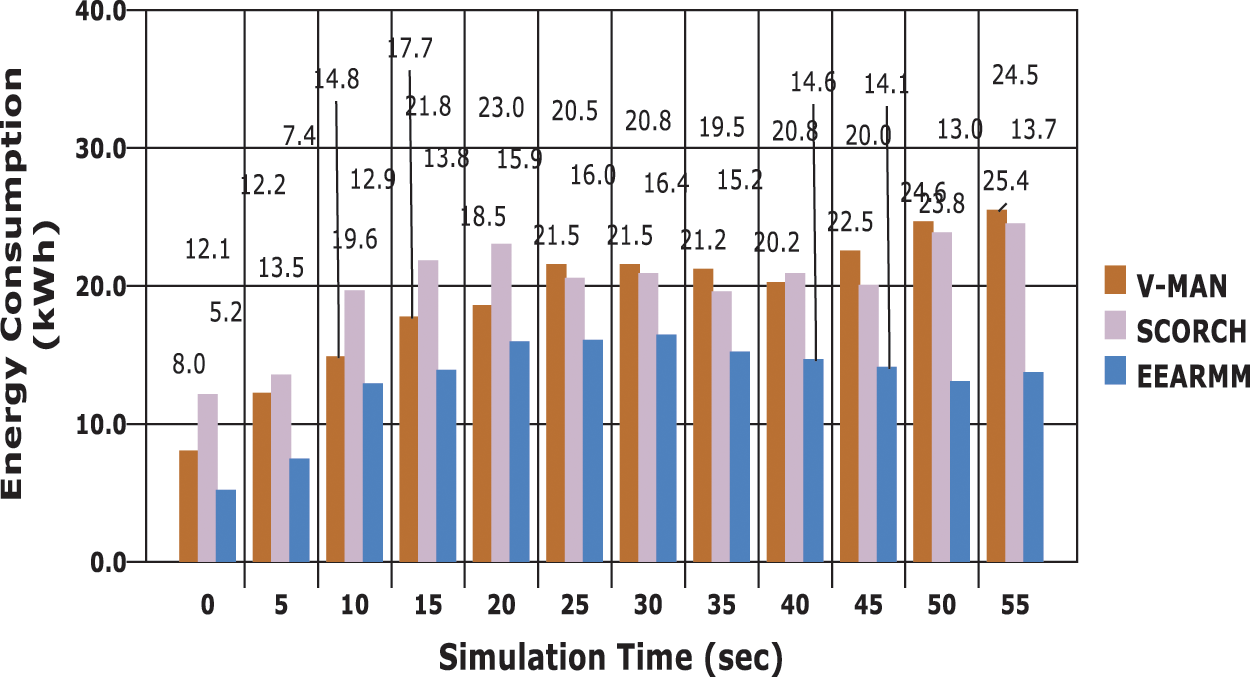
Figure 4: Comparison for energy consumption rate between models
Moreover, the Fig. 5 represents the comparison for the minimum utilized nodes with respect to the simulation time. In EEARMM, the presented algorithms concentrated on optimal workload balancing among the process nodes. In such a manner, the underutilized nodes are properly allotted with some workloads and balanced throughout the execution process in enterprise clouds. From the graph, it is shown that the number of machines that are minimum consumed have become average utilized nodes. Simultaneously, it is also to be focussed that the nodes should not be over consumed or, here, Most_Active PMs, because of unbalanced workload. Hence, the resource utilization and management part play an important role in effectively managing the workloads among machines.
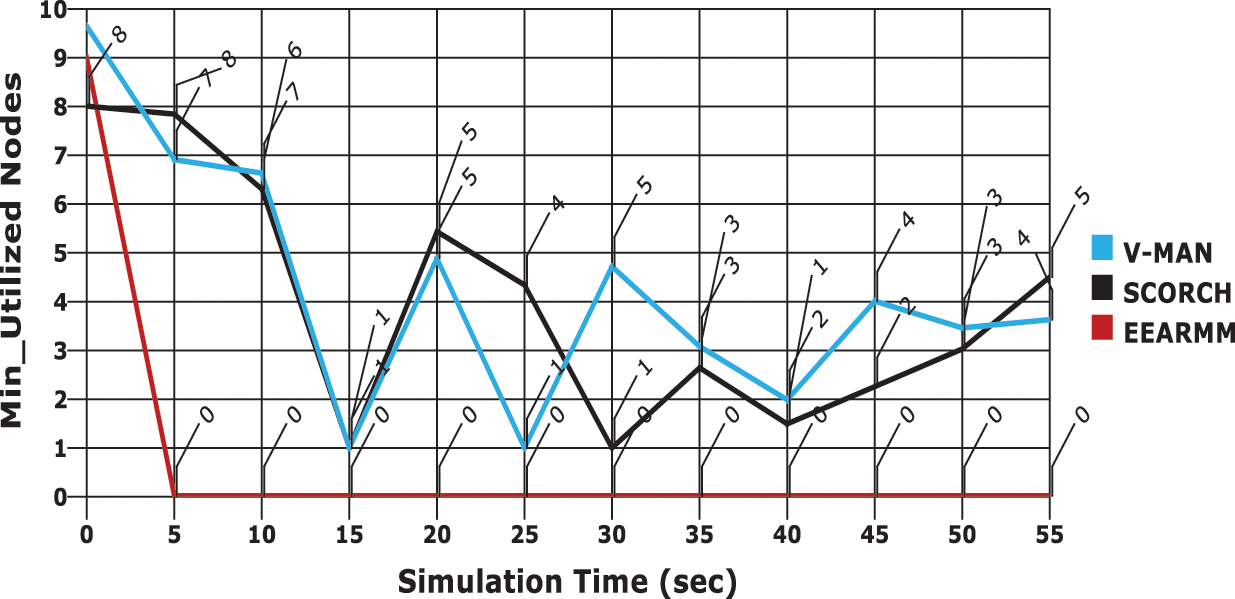
Figure 5: Comparison for minimum utilized nodes
The following graph portrayed in the Fig. 6 illustrates the function of cloud data center, in accordance with the dynamic relocation of virtual machines. And, it also considers the corresponding process nodes that are in Most_Active, Min_Active and inactive states. It is explicit from the graph that the existing models V-MAN and SCORCH accomplished dynamic resource allocation the for machines. But, as the determination represents, the proposed EEARMM are decided to activate some additional or new process nodes instead of over consuming the existing resources. When there is an increase in the incoming workloads, the models over consume the existing resources, thereby increasing the migration time. In the proposed work, based on the algorithms and process descriptions given in Section 3, the VM migration is performed. Hence, it produces better results and outperforms the existing works.
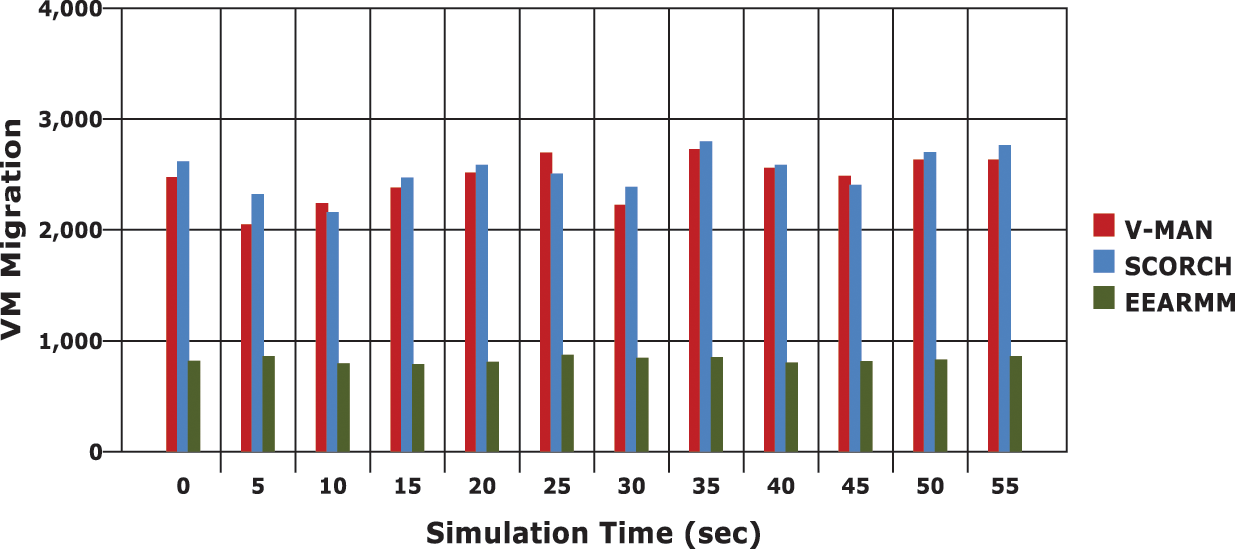
Figure 6: VM migration vs. simulation time
Further, the graph given in Fig. 7 about the statistical results for number of VM migrations take place with respect to the amount of memory consumed. Here, the energy consumption rate of the model is derived on the basis of memory resource utilization. When, the resources of the available machines are properly utilized with the balanced workloads, the number of migrations will be considerably reduced in an explicit manner. And, the results are effectively shown in the graph, in which the proposed model accomplishes lesser amount of VM migrations than the others, by effective utilization of machine resources.

Figure 7: Number of migrations vs. memory consumption
Finally, the graph presented in the Fig. 8, compares the VM migrations occurred and the mem_SLA violations. The SLA violations are generally caused when physical machines are over utilized calculating the VM instances based on active nodes present, and sometimes reduced energy utlizations and reduced performance of the nodes. In the cloud environment, satisfying SLA is an important thing to be concerned with. Based on that, the analysis has been made for determining the SLA violations happened in the overall process. By the effectiveness of EEARMM, the SLA violations are considerably low, when compared to the existing models.
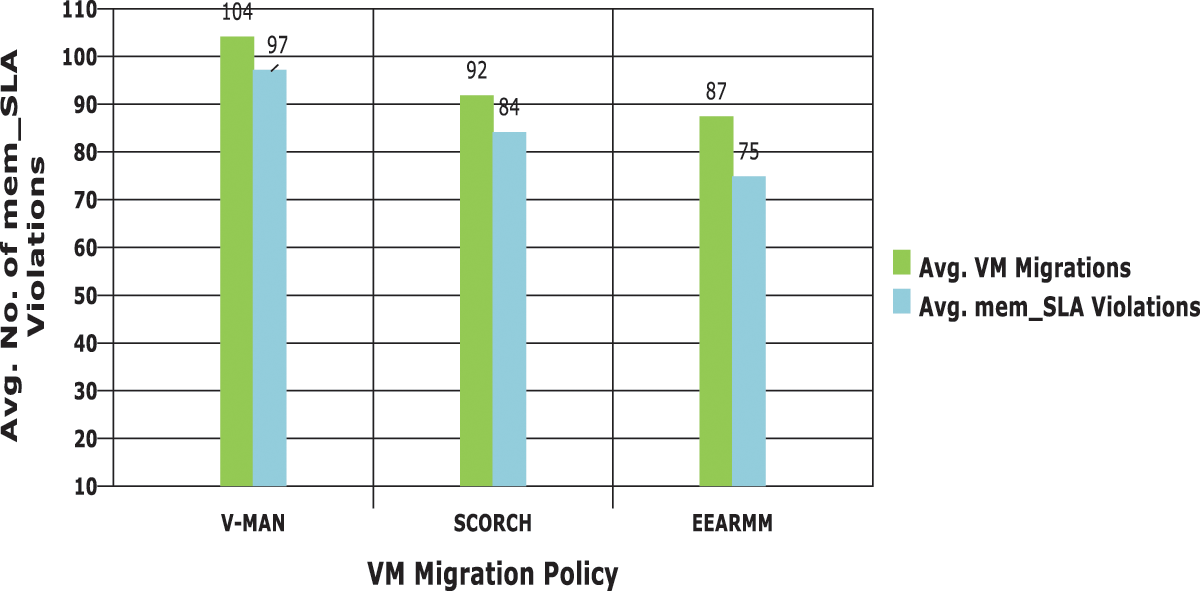
Figure 8: VM migration vs. SLA violations
An attempt has been made to develop novel Efficient Energy-Aware Resource Management Model (EEARMM) for dynamic VM migration with the collaborative efficiency of cloud environment in a decentralized manner. Moreover, the model puts forward a VM selection algorithm to perform live migration and an algorithm for VM placement to migrate the selected VM to the appropriate destination host. The process of dynamic VM migration has been accomplished by analyzing the resource consumption and utilization rate of each physical machine. The model evaluation has been carried out by varying the workloads in a periodical manner and is scalable with the decentralized load along with the automated elasticity to select the nodes. Furthermore, the analysis has been made with respect to the factors such as energy consumption, time taken for VM migration, number of migrations and SLA violations. The results produced by the proposed work outperformed the results of the compared existing works and showed its efficacy explicitly.
The work can be further enhanced by enforcing some additional factors that evaluate the workload balancing and management in better ways. In another path, power metrics can also be incorporated in future process for the VM instances. The work can also be implemented and evaluated with the real-time open-source cloud operating systems for better analysis.
Funding Statement: The authors received no specific funding for this study.
Conflicts of Interest: The authors declare that they have no conflicts of interest to report regarding the present study.
1. M. Armbrust, A. Fox, R. Griffith, A. D. Joseph, R. Katz et al., “A view of cloud computing,” Communications of the ACM, vol. 53, no. 4, pp. 50–58, 2010. [Google Scholar]
2. Anton Beloglazov, Rajkumar Buyya, Young Choon Lee, Albert Zomaya, “A taxonomy and survey of energy-efficient data centers and cloud computing systems,” Advanced Computing, vol. 82, pp. 47–111, 2011. [Google Scholar]
3. Andrei Tchernykh, Luz Lozano, Uwe Schwiegelshohn, Pascal Bouvry “Online bi-objective scheduling for iaas clouds ensuring quality of service,” Journal of Grid Computing, vol. 14, pp. 5–22, 2016. [Google Scholar]
4. C. Clark, K. Fraser, S. Hand, J. G. Hansen, E. Jul et al., “Live migration of virtual machines,” in Proc. of 2nd Symp. on Networked Systems Design & Implementation (NSDI’05), Oakland, CA: USENIX Association, vol. 2, pp. 273–286, 2005. [Google Scholar]
5. K. Tsakalozos, V. Verroios, M. Roussopoulos and A. Delis, “Time-constrained live VM migration in share-nothing iaas-clouds,” in Proc. of the 7th IEEE Int. Conf. on Cloud Computing (IEEE CLOUD’14), Anchorage, AK, 2014. [Google Scholar]
6. W. Voorsluys, J. Broberg, S. Venugopal and R. Buyya, “Cost of virtual machine live migration in clouds: A performance evaluation,” in Proc. of the 1st Int. Conf. on Cloud Computing (CloudCom’09), Beijing, China, pp. 254–265, 2009. [Google Scholar]
7. T. Hirofuchi, H. Nakada, S. Itoh and S. Sekiguchi, “Reactive consolidation of virtual machines enabled by postcopy live migration,” in Proc. of 5th Int. Workshop on Virtualization Technologies in Distributed Computing (VTDC’11), ACM, San Jose, CA, pp. 11–18, 2011. [Google Scholar]
8. E. Feller, L. Rilling and C. Morin, “Snooze: A scalable and autonomic virtual machine management framework for private clouds,” in Proc. of 12th IEEE/ACM Int. Symp. on Cluster, Cloud and Grid Computing (CCGRID’12), Ottawa, Canada, pp. 482–489, 2012. [Google Scholar]
9. F. Quesnel, A. Lebre and M. S. udholt, “Cooperative and reactive scheduling in large-scale virtualized platforms with DVMS,” Concurrency and Computation: Practice and Experience, vol. 25, no. 12, pp. 1643–1655, 2013. [Google Scholar]
10. F. Hermenier, X. Lorca, J. -M. Menaud, G. Muller and J. Lawall, “Entropy: A consolidation manager for clusters,” in Proc. of 2009 ACM SIGPLAN/SIGOPS Int. Conf. on Virtual Execution Environments (VEE’09), Washington, DC, pp. 41–50, 2009. [Google Scholar]
11. C. Mastroianni, M. Meo and G. Papuzzo, “Probabilistic consolidation of virtual machines in self-organizing cloud data centers,” IEEE Transactions on Cloud Computing, vol. 1, no. 2, pp. 215–228, 2013. [Google Scholar]
12. J. Baliga, R. W. Ayre, K. Hinton and R. Tucker, “Green cloud computing: Balancing energy in processing, storage, and transport,” in Proc. of the IEEE, Italy, vol. 99, no. 1, pp. 149–167, 2011. [Google Scholar]
13. A. Berl, E. Gelenbe, M. Di Girolamo, G. Giuliani, H. De Meer et al., “Energy-efficient cloud computing,” The Computer Journal, vol. 53, no. 7, pp. 1045–1051, 2010. [Google Scholar]
14. A. M. Sampaio and J. G. Barbosa, “Optimizing energy-efficiency in high-available scientific cloud environments,” in Proc. of 3rd Int. Conf. on Cloud and Green Computing (CGC’13), Karlruhe, Germany, pp. 76–83, 2013. [Google Scholar]
15. A. Beloglazov and R. Buyya, “Energy efficient resource management in virtualized cloud data centers,” in Proc. of the 10th IEEE/ACM Int. Conf. on Cluster, Cloud and Grid Computing (CCGRAID’ 10), Melbourne, Australia, pp. 826–831, 2010. [Google Scholar]
16. A. Beloglazov, J. Abawajy and R. Buyya, “Energy-aware resource allocation heuristics for efficient management of data centers for cloud computing,” Future Generation Computer Systems, vol. 28, no. 5, pp. 755–768, 2012. [Google Scholar]
17. B. Dougherty, J. White and D. C. Schmidt, “Model-driven auto scaling of green cloud computing infrastructure,” Future Generation Computer Systems, vol. 28, no. 2, pp. 371–378, 2012. [Google Scholar]
18. D. Bruneo, A. Lhoas, F. Longo and A. Puliafito, “Analytical evaluation of resource allocation policies in green IaaS clouds,” in Proc. of the 3rd Int. Conf. on Cloud and Green Computing (CGC’133), Karlruhe, Germany, pp. 84–91, 2013. [Google Scholar]
19. Y. Lee and A. Zomaya, “Energy efficient utilization of resources in cloud computing systems,” The Journal of Supercomputing, vol. 60, no. 2, pp. 268–280, 2012. [Google Scholar]
20. J. Cao, Y. Wu and M. Li, “Energy efficient allocation of virtual machines in cloud computing environments based on demand forecast,” in Proc. of 7th Int. Conf. on Grid and Pervasive Computing (GPC’12), Springer, Hong Kong, China, vol. 7296, pp. 137–151, May 11–13, 2012. [Google Scholar]
21. M. Mazzucco, D. Dyachuk and R. Deters, “Maximizing cloud providers’ revenues via energy aware allocation policies,” in Proc. of the 3rd IEEE Int. Conf. on Cloud Computing (CLOUD 2010), Miami, FL, pp. 131–138, 2010. [Google Scholar]
22. D. Nurmi, R. Wolski, C. Grzegorczyk, G. Obertelli, S. Soman et al., “The eucalyptus open-source cloud-computing system,” in in 9th IEEE/ACM Int. Symp. on Cluster Computing and the Grid (CCGRID’09), Shanghai, China, pp. 124–131, 2009. [Google Scholar]
23. P. Graubner, M. Schmidt and B. Freisleben, “Energy-efficient management of virtual machines in eucalyptus,” in Proc. of 2011 IEEE Int. Conf. on Cloud Computing (CLOUD’11), Washington, DC, pp. 243–250, 2011. [Google Scholar]
24. M. Marzolla, O. Babaoglu and F. Panzieri, “Server consolidation in clouds through gossiping,” in Proc. of 2011 IEEE Int. Symp. on a World of Wireless, Mobile and Multimedia Networks (WoWMoM’11), Lucca, Italy, pp. 1–6, 2011. [Google Scholar]
25. M. Jelasity, S. Voulgaris, R. Guerraoui, A. -M. Kermarrec and M. Van Steen, “Gossip-based peer sampling,” ACM Transactions on Computer Systems (TOCS), vol. 25, no. 3, pp. 8, 2007. [Google Scholar]
26. D. Barbagallo, E. Di Nitto, D. J. Dubois and R. Mirandola, “A bioinspired algorithm for energy optimization in a self-organizing data center,” in Proc. of the 1st Int. Conf. on Self-Organizing Architectures (SOAR’09), Cambridge, United Kingdom: Springer-Verlag, vol. 6090, pp. 127–151, 2010. [Google Scholar]
27. J. L. Hellerstein, “Dynamic heterogeneity-aware resource provisioning in the cloud,” IEEE Transactions on Cloud Computing, vol. 2, no. 1, pp. 14–28, 2014. [Google Scholar]
28. W. Fang, X. Liang, S. Li, L. Chiaraviglio and N. Xiong, “VMPlanner: Optimizing virtual machine placement and traffic flow routing to reduce network power costs in cloud data centers,” Computer Networks, vol. 57, no. 1, pp. 179–196, 2013. [Google Scholar]
29. V. Mann, A. Kumar, P. Dutta and S. Kalyanaraman, “VMFlow: Leveraging VM mobility to reduce network power costs in data centers,” in Proc. of the 10th Int. IFIP TC 6 Conf. on Networking (NETWORKING’11), Valencia, Spain: Springer-Verlag, vol. Part I, pp. 198–211, 2011. [Google Scholar]
 | This work is licensed under a Creative Commons Attribution 4.0 International License, which permits unrestricted use, distribution, and reproduction in any medium, provided the original work is properly cited. |